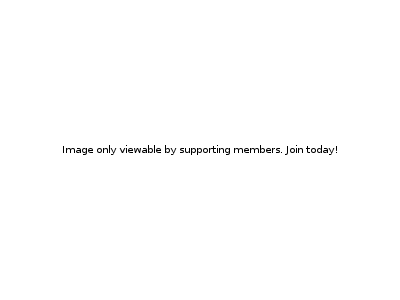Jesus Feeds the 5000
Rotation.org Writing Team
Art Workshop
Summary of Activities
Students will explore the miracle of Jesus feeding the 5000 by participating in a guided scripture painting exercise using a special script we developed for the lesson and technique. The painting technique they will use is inspired by "Kandinsky-circles" where the circles and their colors represent the parts and players in the story (the crowd, boy, loaves & fishes, Jesus) and the students themselves. Their choices of colors and style will reflect their understanding of the transformation that occurred when Jesus revealed his true identity to the crowd that day on the hill, how people may have responded to it, and our own transformation when we see and believe the Bread of Heaven standing before us.
This lesson is inspired by Wassily Kandinsky’s famous painting, "Color Study: Squares with Concentric Circles." (A copy to print and show your students has been attached below. We have also attached an "About" page for parents.) Considered the "Father of Abstract Art," Kandinsky's fun, simple, and symbolic concentric circles and his understanding of the emotions that color can express, make painting in his style a neat opportunity for children of all ages to express their understanding of the story and place themselves in it. As they will learn in this lesson's "guided painting technique," circles are also important symbols in the Church and Bible.
Scripture for the Lesson
John 6:1-15 (NIV)
Key/Memory Verses: The first memory verse describes the miracle in two sentences. The second describes the message of the miracle. The third comes from a verse Jesus spoke after the story.
"Jesus took the bread, gave thanks to God, and distributed it to the people who were sitting there. He did the same with the fish, and they all had as much as they wanted." (John 6:11 NIV)
"Seeing this miracle that Jesus had performed, the people there said, “Surely this is the Prophet who was to come into the world!” (John 6:14 NIV)
"I am the Bread of Life." (John 6:35 NIV)
Lesson Objectives
See the Bible Background at rotation.org for this set's complete list of objectives and important insights into the story's content and meaning.
Preparation and Materials
- Read the Bible Background and scripture.
- Print copies of the Guided Scripture and Painting Script for the teachers.
- Print color copies of Wassily Kandinsky’s “Color Study: Squares with Concentric Circles” painting (attached to this lesson).
- Print copies of the "Jesus Face" clipart (attached) sized to fit in one of the grid squares on the student's painting grid. (It includes some lesson help.)
- Print a color copy of the "Circles ~ Symbolism" handout to show students (attached).
- Print copies of the "About Our" project handout for parents (attached).
- Glue sticks to attach Jesus image to the heavy drawing paper in advance.
- Covering for table, such as newsprint.
- Sheets of heavy drawing/painting paper -one per student (with extras). 12 X 16 inch (cut to size if needed). Do not use thin paper as the paint will soak through and wrinkle when dry.
- Provide smaller pieces of drawing paper for practice.
- Pencils – one per student.
- Paper towels for messes, hands, and wiping brushes.
- Coated paper or styrofoam trays for paint palettes -one per color.
- Paint smocks or large t-shirts, one per student.
- Various sizes of round art-style paint brushes – buy the best quality you can afford for ease of use and best painting results (online art supply stores sell brushes in class packs). We recommend at least two or three brushes per color available at each tray (depending on your class size).
- Acrylic paints in primary + secondary colors (several bright colors and several darker colors). You may also substitute oil pastels. (Do not use watercolors.) 7 or 8 different colors should suffice.
- Metallic gold acrylic paint (for Jesus).
- Hair dryer - use if you want to speed up the paint drying.
- Round breadsticks (cut into 1-inch sections) to stamp "bread" on painting– 1 section per student.
- Fish shapes (cut from foam, cardboard or use Swedish fish candy) – 1 per student.
- Flip chart or whiteboard and markers.
- Download (or use a CD) of relaxing instrumental music – suggestion: https://youtu.be/nnk1HTsmJk0.
- CD player or iPod/phone for playing music while painting (Kandinsky was famous for listening to music while painting).
Advanced Preparation
- Display the copy of Kandinsky’s painting where students can see it.
- Cover the table and prepare the painting supplies listed above.
- Using a pencil and ruler, lightly draw a grid of 4-inch "Kandinsky" squares on each sheet of paper (you should have 3 vertical squares X 4 horizontal squares when done).
- Glue a Jesus image in one of the center squares on each of the large drawing sheets (if you will be using that image.
 Older students may decide for themselves if they want to have the Jesus image to paint over or paint their own representation).
Older students may decide for themselves if they want to have the Jesus image to paint over or paint their own representation).
- Outline one 4-inch square on the practice paper sheets.
- Put out the paint by placing a dollop of each paint color, each on its own foam plate.
- Write the following on a whiteboard or flip chart in reference to Kandinsky's original art:
- What shapes do you see in this painting?
- What colors do you see?
- How do the colors in this painting make you feel? (What message does this or that color seem to be saying to you?)
Lesson Plan
Open
- Welcome your students and have them put on paint smocks as they arrive.
- Direct them to look at the displayed Kandinsky painting and think about the questions listed on the whiteboard (see Advanced Planning above).
- Explain that they will be creating a special painting in the same style as the one displayed to help us think about the meaning of the Miracle of Jesus Feeding the 5000.
- Review the painting instructions found in the script.
Follow the Guided Scripture and Painting Exercise
The script tells the teacher what to read, say, and ask, and the order of what the artists are to work on.
Reflect and Close
Say: Let's get up and look at each other's paintings as they dry. When we come to yours, be ready to tell us something interesting about the way you painted some of your squares, including how you painted your own square.
Ask: Why do you think YOU are "the second most important person" in this story?
Ask: After seeing this miracle, when you walk away from the crowd today (so to speak), how will you be different? What will you have learned?
Say: Jesus invited everyone in the crowd and all of us today to think about who he is and what we believe about him. Jesus wants us to believe in him and respond with all our heart, soul, strength, and mind.
Say and Do: I’m going to come around, and with your permission, I'm going to PAINT ONE FINAL KANDINSKY CIRCLE on each of your hands. This circle will be a sign that you have met Jesus the Holy One you have been waiting for, and it will be a sign to others of how you may have been changed by him or want to be.
In keeping with our Kandinsky color activity, I want YOU to decide "which color" I should draw on your hand. And here's what the colors will mean: (write them on the board)
- Yellow = I believe Jesus is my light and salvation.
- Blue = I want to feel Jesus' comfort and strength in my life.
- Green = I want my faith in Jesus to grow.
- Red = I want to be more loving like Jesus.
- Choose from any of the other paint colors and apply your own meaning.
Close with prayer.
Adaptations for younger students and those short on time:
- See the script for some suggestions.
- Reduce the number of squares from 12 to 6 (1 Jesus, 1 You, 1 Boy, 3 People)
- Have young students draw circles using crayons, then fill in with paint. (Remind students that they do not have to completely fill in each circle. They can leave white space.)
- Be sure to glue the Jesus image to a central square ahead of time. This will add a more "concrete" visual to what is otherwise an abstract painting. Younger students may also want to paint more fish and bread, and include a few keywords.
- If you need to save a lot of time, have students work on individual squares of Kandinsky circles which you have pre-cut cut into individual pieces ahead of time. Assign different parts of the script to different students to work on with a helper, and then assemble the squares back together to create one complete picture of 9 to 12 circles (use wide masking tape to tape the seams on the backside of the painting). The Jesus circle could be a group decision. Then, each student could also create their own personalized dot-circle painting to add to the group's collection. Once assembled, each group could share what its circles represent.
Paints and Brushes
- We are recommending acrylic paints for their vibrancy, and they tend not to "spread" on paper like watercolor paints do.
- Adjust to the size of your group, student ages, and size of your tables.
- You don't want kids to have to reach too far for paint.
- You don't want paint dollops too close together or they will get mixed.
- The more paint you put out on the tray, the more students will think to use, and you don't want to end up with "glops" on their drawing paper. Encourage kids not to paint circles by "coloring them in" but by using simple brush strokes.
- You can mix paint colors on purpose. Just remember to keep the brushes from one color from mixing with the other colors. Use paper towels to clean paint off of brushes.
- Have extra trays and brushes. Brushes can be leaned on the tray or put in empty cups.
- If a student "messes up" one of their circles/squares, cut a "patch" square and quickly paste it over the square they want to cover.
Display Options:
Instead of taking their paintings home, share them with the congregation. Include a flyer (attached) describing the Kandinsky technique, guided scripture and painting process, and how the "abstract color choices" made by each student express their insights into the story and responses to questions posed by the teacher.
Notes and Sources
History of Kandinsky: https://www.youtube.com/watch?v=v7d6zscZF5I
Christianity and Circles: http://www.art-rageous.net/ChristianSymbols.html
Written by Jaymie Derden and the Rotation.org Writing Team
Copyright 2019, Rotation.org Inc.









